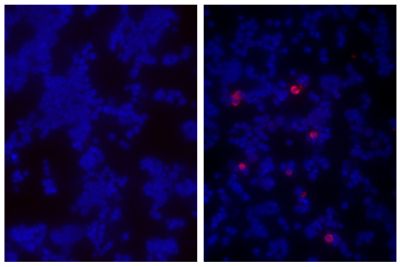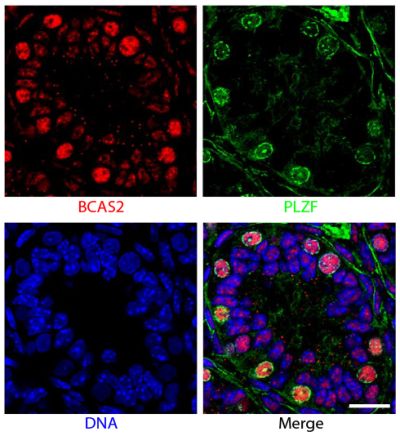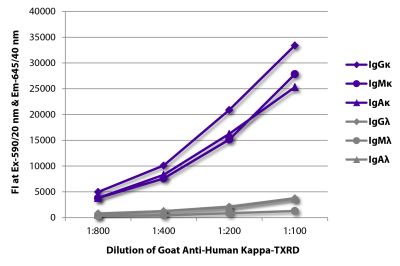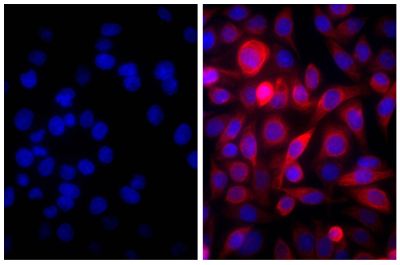Goat Anti-Human Kappa, Mouse ads-TXRD
Cat. No.:
2061-07
Goat Anti-Human Kappa-Texas Red antibody with minimal reactivity to mouse proteins for use in flow cytometry assays.
$301.00
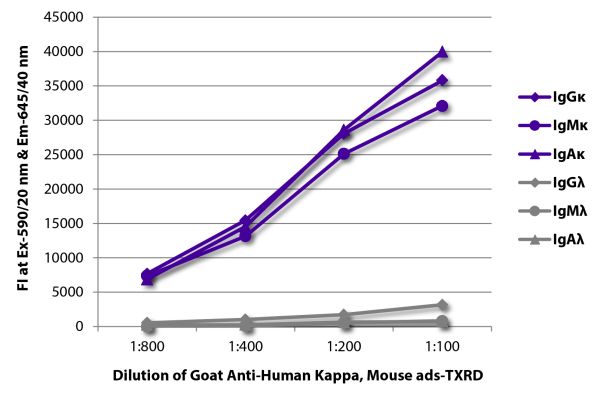

| Isotype | Goat IgG |
|---|---|
| Isotype Control | Goat IgG-TXRD |
| Specificity | Reacts with human κ light chains |
| Source | Pooled antisera from goats hyperimmunized with human κ light chains |
| Cross Adsorption | Human λ light chains; mouse immunoglobulins and pooled sera; may react with κ light chains from other species |
| Purification Method | Affinity chromatography on human κ light chains covalently linked to agarose |
| Conjugate | TXRD (Texas Red®) |
| Buffer Formulation | Phosphate buffered saline containing < 0.1% sodium azide |
| Clonality | Polyclonal |
| Concentration | 1.0 mg/mL |
| Volume | 1.0 mL |
| Recommended Storage | 2-8°C; Avoid exposure to light |
| Trademark Information | Texas Red® is a registered trademark of Thermo Fisher Scientific, Inc. or its subsidiaries |
| Applications |
Quality tested applications for relevant formats include - ELISA 1 FLISA Flow Cytometry |
| RRID Number | AB_2795733 |
| Gene ID |
3514 (Human) |
| Gene ID Symbol |
IGKC (Human) |
| Gene ID Aliases | HCAK1D; Km; IGKC |
| UniProt ID |
P01834 (Human) |
| UniProt Name |
IGKC_HUMAN (Human) |
Documentation
Certificate of Analysis Lookup
Enter the Catalog Number and Lot Number for the Certificate of Analysis you wish to view
- 1. Maurer MF, Garrigues U, Jaspers SR, Meengs B, Rixon MW, Stevens BL, et al. Generation and characterization of human anti-human IL-21 neutralizing monoclonal antibodies. MABs. 2012;4:1:69-83. (ELISA)


